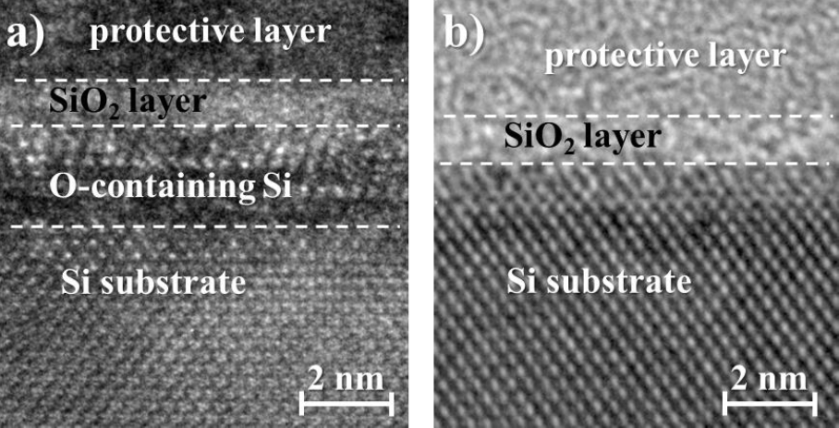
In the course of developing modern silicon solar cell concepts towards higher efficiencies, interfacial properties and the quality of passivation layers are becoming increasingly important. In order to understand and evaluate the function of the used ultrathin oxide layers, reliable analytical methods for structural and chemical characterization are needed. Performing these analyses on nanometer scale is in particular challenging. This was realized at the Fraunhofer CSP in the Group Diagnostics of Solar Cells by various high-resolution analysis methods investigating the rear side oxide layer occurring for example in the TOPCon[1] cell concept which was developed at the Fraunhofer ISE. Thus, among other things, various oxygen compounds were detected within the passivation layer. It was evaluated how a temperature annealing step affects the oxide layer structure and interaction with the silicon crystal lattice. The results were also convincing at the SiliconPV 2015 conference in Konstanz. From 200 contributions, the article »High-resolution Structural Investigation of passivated Interfaces of Silicon Solar Cells« written by Susanne Richter and her colleagues in cooperation with the Fraunhofer ISE has been voted among the top ten and received the SiliconPV 2015 award. These results as well as further research activities[3] will help customers in the solar industry with new technology to benefit from these insights and to accordingly optimize the development of their cells.
[1] F. Feldmann, M. Bivour, C. Reichel, M. Hermle, S. W. Glunz, »Passivated rear contacts for highefficiency n-type Si solar cells providing high interface passivation quality and excellent transport characteristics«, Solar Energy Materials and Solar Cells, 120, 270-274 (2014)
[3] A. Moldovan, F. Feldmann, K. Kaufmann, S. Richter, M. Werner, C. Hagendorf, M. Zimmer, J. Rentsch, M. Hermle, Tunnel Oxide Passivated Carrier-Selective Contacts Based on Ultra Thin SiO2 Layers, 42nd IEEE PVSC New Orleans, June, 17th 2015 (in print)
 Fraunhofer Center for Silicon Photovoltaics CSP
Fraunhofer Center for Silicon Photovoltaics CSP